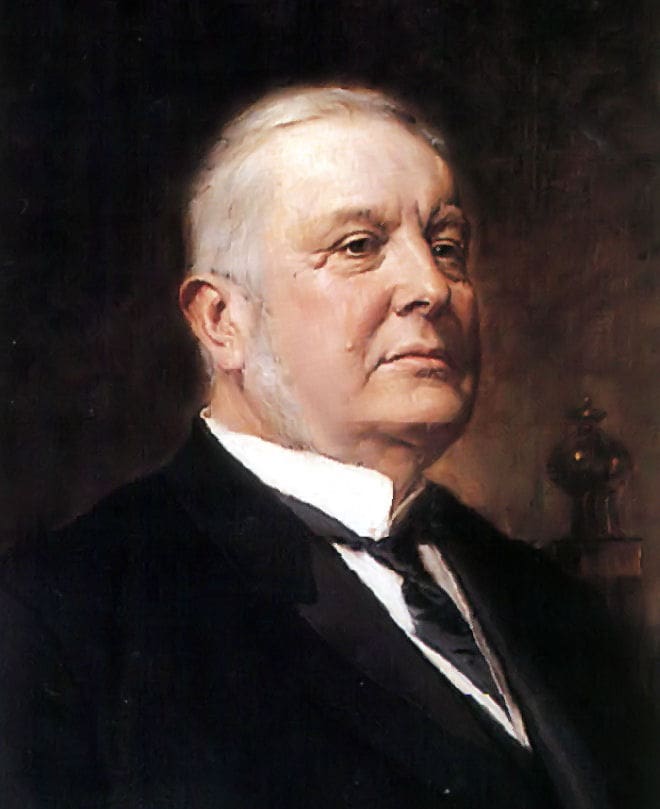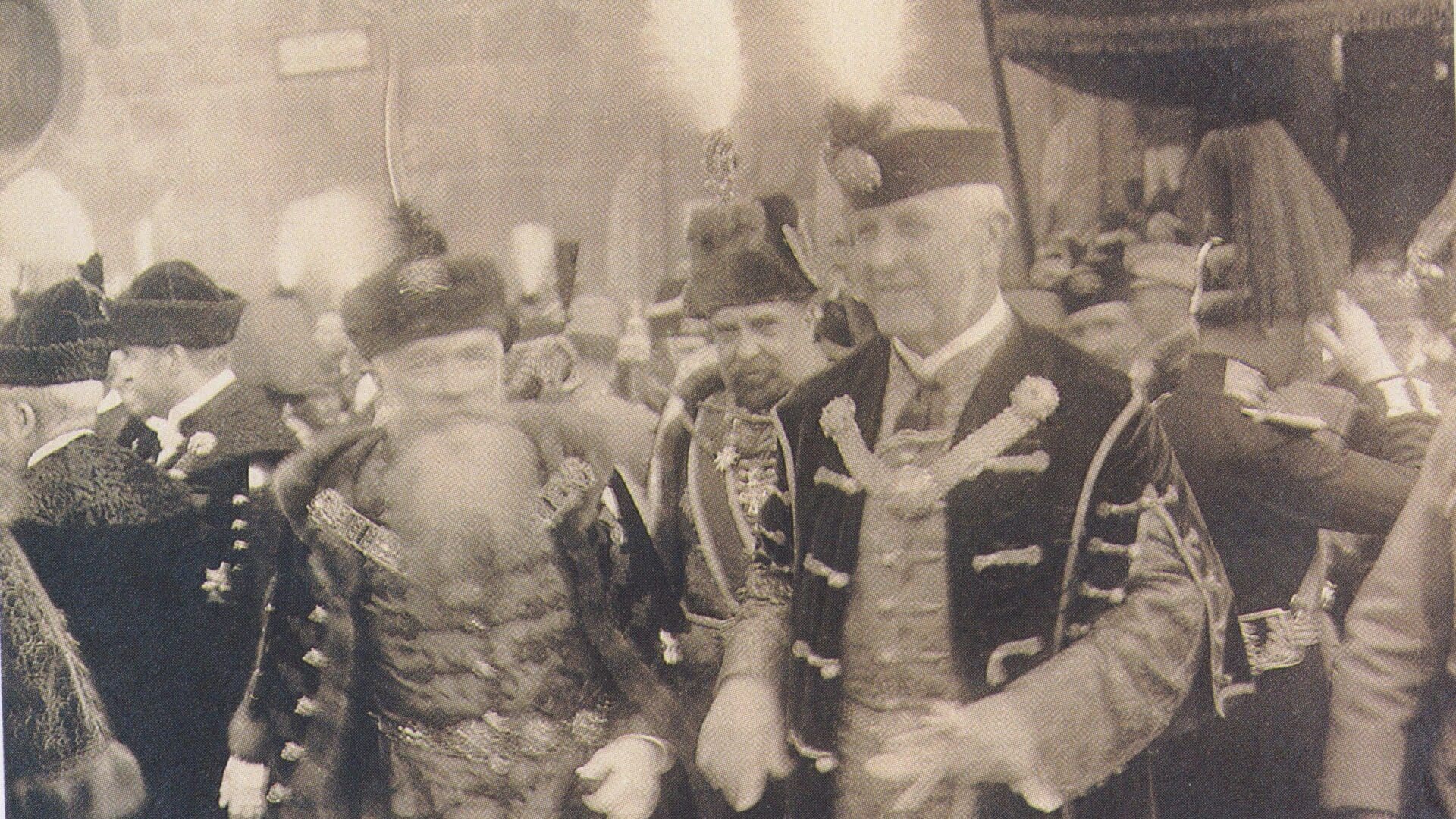Sándor Wekerle is known in Hungary as the first prime minister who came from a non-noble background. Known, however, is an overstatement, since Wekerle was, in fact, quite unknown, even by Hungarians, for decades, despite the important role he played in Compromise era Hungarian politics.
Wekerle’s father was the bailiff (in modern terms, the estate manager) of an aristocratic family. Wekerle’s ascension to premiership was remarkable, as before him, politics had been dominated by the mid-to-high nobility. He was also the first prime minister who hailed from not from an ethnic Hungarian, but a German background.
Early Years
Wekerle was born in the Fejér County town of Mór. He was educated in Székesfehérvár, at the secondary school run by the Cistercian Order. Upon finishing his studies, he enrolled in the Royal Academy of Sciences in Pest (today, ELTE University of Sciences, Budapest), reading law. He was extremely erudite, and spoke Latin fluently; he was also a free mason for some ten years.
Obtaining his degree as a jurist, Wekerle immediately started to work for the Ministry of Finance, and as early as 1889, he became the minister himself. A few years later, Wekerle was appointed minister responsible for trade.
His Tenures as Prime Minister
Wekerle served as prime minister three times.
His first tenure was from 1892 to 1895, and the second one from 1906 to 1910. From 1896 to 1906, Wekerle was a court president, therefore he also became a member of the Upper House, and thus, resigned from electoral politics for that decade. Unprecedentedly in Hungarian history, Wekerle also served a third term from 1917 to 1918.
During his first term, Wekerle adopted the gold standard, strengthening the Hungarian Forint, and subsequently balanced the budget, cutting back on debt as well. His tenure was characterized by a general reshuffle of the financial administration, making it neater and more orderly.
Wekerle also worked toward modernizing Hungary’s legal system and legal code, harmonizing it with the common European framework. During his first premiership, he prepared important social reforms a well. For instance, he drafted laws on expanding religious freedom, and it was
during his time as prime minister that the law on the complete religious emancipation of Jews was passed.
(The civil equality of Jews was enacted in 1848, as an achievement of the revolution, and was followed by their virtually full emancipation under Prime Minister Gyula Andrássy in 1867). Civil marriage was also proposed by him, although the law on it was only passed by parliament after his resignation.

His later premierships were spent trying to save the Austro-Hungarian Empire from disintegration. In 1905, the opposition won the election. The opposition parties mostly opposed the framework of the 1867 Compromise and wanted to carve out a larger autonomy for Hungary. However, the 1867 legal basis was seen by the Habsburgs as sacrosanct, and not up to renegotiation. After a year of political conflict, the opposition parties gave up most of its demands, enabling Francis Joseph to appoint a prime minister of their choice, Wekerle. The programme of the new Wekerle government included expanding suffrage and improving the conditions of the lower classes. In those years, Hungary was plagued by massive emigration. Landless farmers and poor people left in droves for the United States. To avert this negative tendency,
Wekerle initiated, among other things, the building of public housing for workers,
including an entire quarter in what is now the 19th district of Budapest, later named ‘Wekerletelep’ (Wekerle Housing Project) after him. His government also drafted a tax reform which would have, among other things, made the lowest incomes exempt from taxation.
In 1917, during Wekerle’s third tenure, the state was on the brink of collapse again. The defeat in the First World War was drawing near, and Emperor Charles IV tried to enact reforms, giving minorities and lower classes more autonomy and the right to vote. Hungarian elites, including Wekerle, opposed these planned measures. Wekerle resigned on 30 October 1918. His resignation had symbolic significance: it meant the effective end of the Austro–Hungarian Empire. After the one-day premiership of János Hadik, the republican Aster Revolution swept away the old Hungary.
Later Life and Legacy
Wekerle retired from politics after 1918. In his later years, he was the head of the National Financial Council, as well as of a similar institution, responsible for bolstering education. Wekerle was also member of the Hungarian Academy of Sciences. He passed away in 1921.
Sándor Wekerle was largely forgotten after his death. His talent as an economist was widely praised by contemporary professionals during his life, but not during most of the twentieth century. However, he was gradually rediscovered after the system change. A business school was named after him, and after 2000, more and more institutions took his name, and
even a government programme was named after him.
The first public statue commemorating him was erected at the Wekerletelep in Budapest in 2008, while his hometown, Mór dedicated a statue to him in 2011.
A pragmatic, liberal politician and a competent economist, Wekerle approached issues in a business-like manner and looked for actual solutions, as opposed to having an ideological starting point. Generally championing liberal progress, Wekerle still deviated from liberal orthodoxy, for example using state measures to ameliorate the state of the lower classes, but also to safeguard Hungary’s territorial unity from federalization. He also stands out as the first commoner ever to become prime minister in Hungary. His career demonstrated the progress and development achieved during the Compromise Era, when from a feudal state Hungary was transformed into a more modern country, with an expanded middle class. Unfortunately, the pragmatic and efficient approach to issues that characterized him was relegated to history for a long time after his death.








